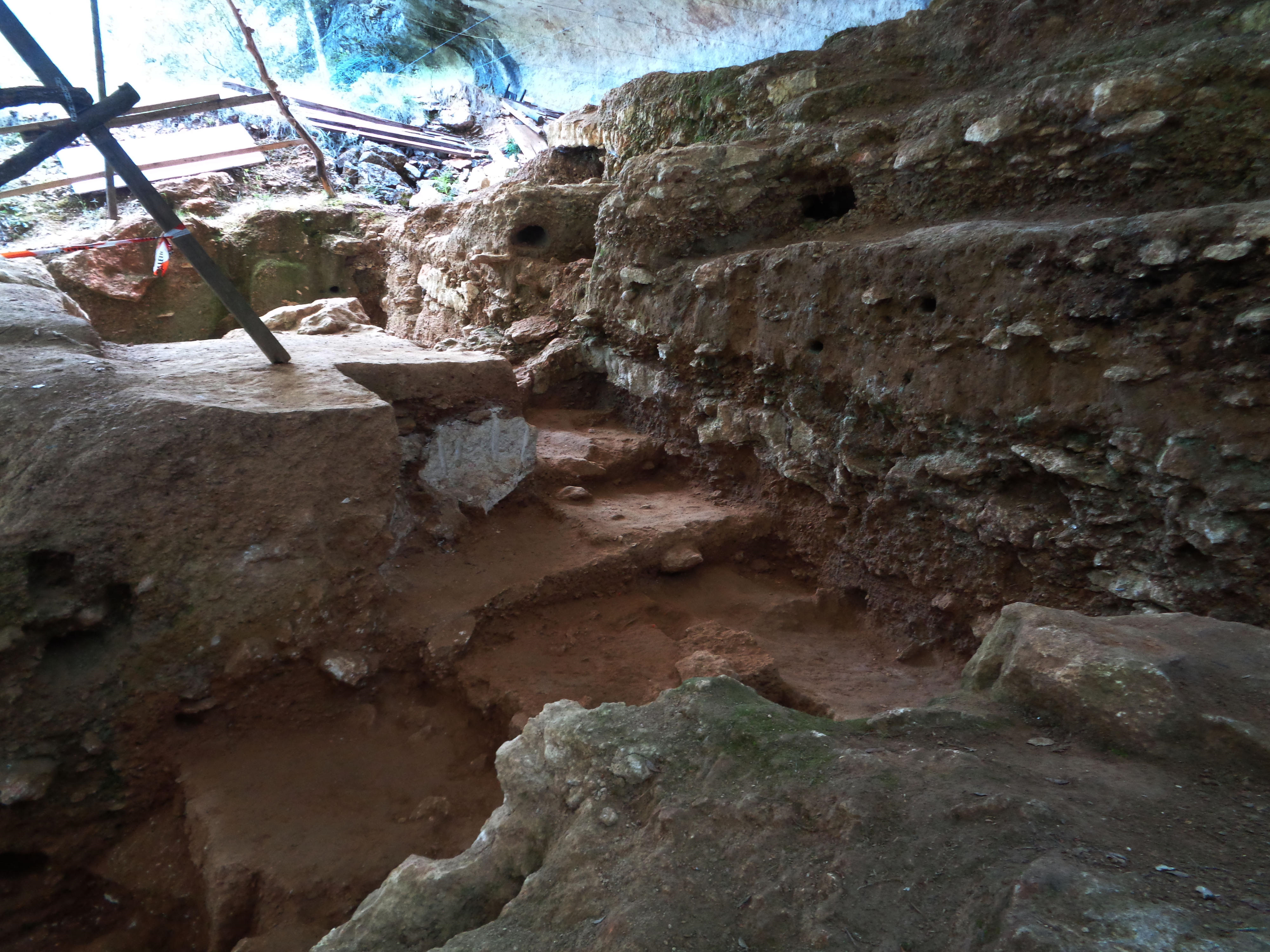A tiny scrap of thread stuck to the lower side of a stone flake offers a huge insight into Neanderthal life. The 6.2mm (0.24 inch) long bit of thread, spun from plant fibers, is the oldest example of the material ever found. According to uranium-series dating, the thread came from a layer of sediment between 52,000 and 41,000 years old at a Neanderthal site called Abri du Maras, in France. Its nearest rival for the “oldest string ever” title is a fragment of fiber from a 19,000-year-old site in Israel.
When Kenyon College archaeologist Bruce Hardy and his colleagues looked at the thread under a microscope, the fibers turned out to be from bast: a fibrous layer of tissue just beneath the bark of a tree. These particular fibers had probably come from a conifer like pine, which would have been available nearby, according to pollen and charcoal traces from the site. An ancient craftsperson had twisted fibers together clockwise to make twisted bundles and then twisted three bundles together counterclockwise to make a three-ply cord. The cord was about 0.5mm thick (lace weight, if you’re a modern knitter or crocheter).
Approximately 46,000 years ago, the thread may have been wrapped around the end of the 60mm (2.4 inch) long stone tool as a grip, or it may have been part of a net or woven bag that held the tool. It may even have been completely unrelated—just a bit of domestic jetsam dropped on the same patch of cave floor where the stone flake later wound up.
The fiber find suggests that Neanderthal life included a lot more than stone and bone tools. Once you can twist or spin fibers into thread, you can make all sorts of things: clothes, nets, cord for fishing or hafting stone tools, and rope for all sorts of purposes. Those kinds of objects are, if you'll excuse the pun, woven into the fabric of daily life, but the materials they’re made from decay quickly, so they’re almost invisible at Paleolithic sites like Abri du Maras. Archaeologists sometimes call wood and fiber artifacts “the missing majority,” and their absence can skew our ideas how about Neanderthals (and their eventual Homo sapiens neighbors) actually lived.


